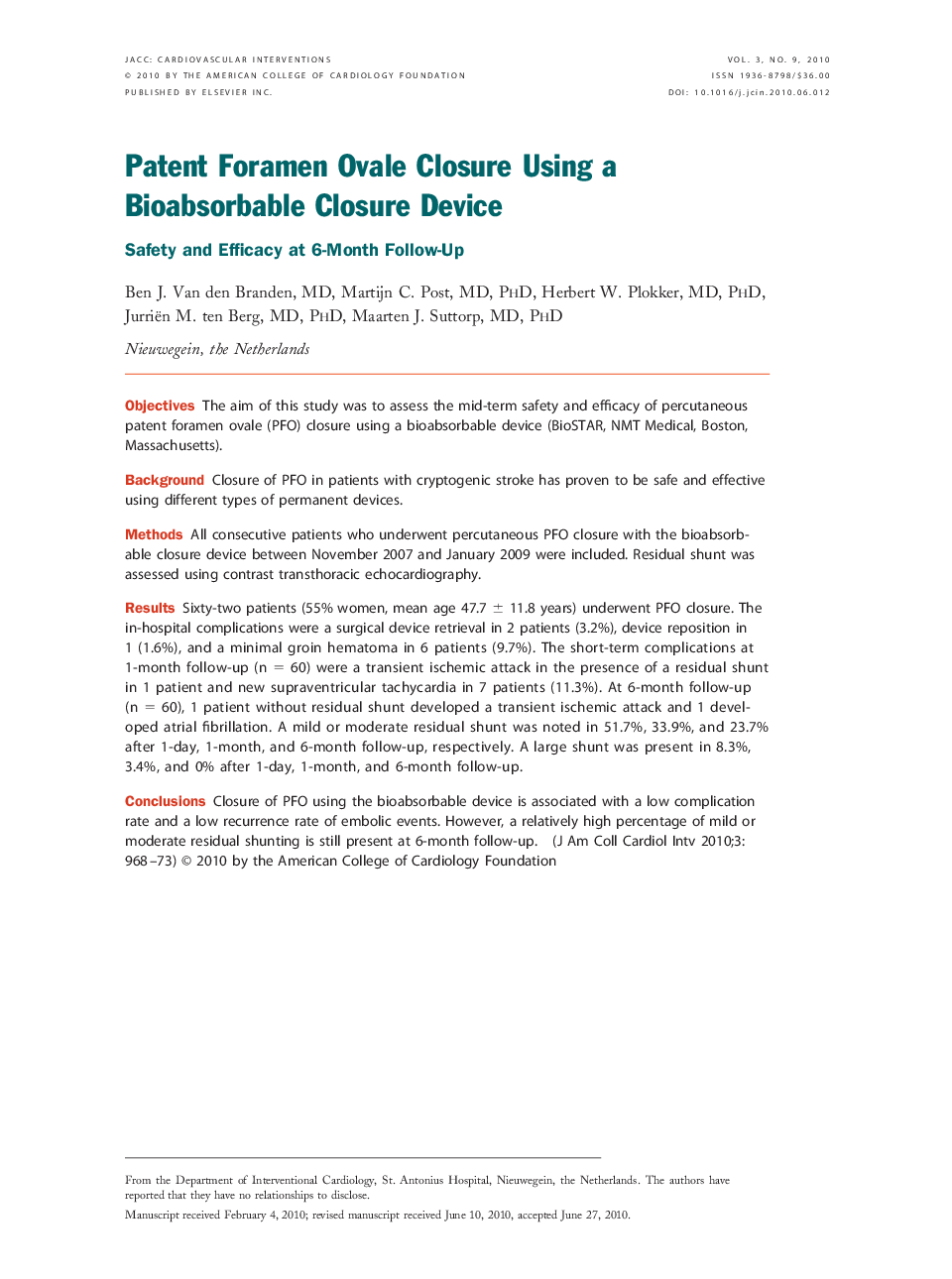| کد مقاله | کد نشریه | سال انتشار | مقاله انگلیسی | نسخه تمام متن |
|---|---|---|---|---|
| 2941745 | 1177084 | 2010 | 6 صفحه PDF | دانلود رایگان |

ObjectivesThe aim of this study was to assess the mid-term safety and efficacy of percutaneous patent foramen ovale (PFO) closure using a bioabsorbable device (BioSTAR, NMT Medical, Boston, Massachusetts).BackgroundClosure of PFO in patients with cryptogenic stroke has proven to be safe and effective using different types of permanent devices.MethodsAll consecutive patients who underwent percutaneous PFO closure with the bioabsorbable closure device between November 2007 and January 2009 were included. Residual shunt was assessed using contrast transthoracic echocardiography.ResultsSixty-two patients (55% women, mean age 47.7 ± 11.8 years) underwent PFO closure. The in-hospital complications were a surgical device retrieval in 2 patients (3.2%), device reposition in 1 (1.6%), and a minimal groin hematoma in 6 patients (9.7%). The short-term complications at 1-month follow-up (n = 60) were a transient ischemic attack in the presence of a residual shunt in 1 patient and new supraventricular tachycardia in 7 patients (11.3%). At 6-month follow-up (n = 60), 1 patient without residual shunt developed a transient ischemic attack and 1 developed atrial fibrillation. A mild or moderate residual shunt was noted in 51.7%, 33.9%, and 23.7% after 1-day, 1-month, and 6-month follow-up, respectively. A large shunt was present in 8.3%, 3.4%, and 0% after 1-day, 1-month, and 6-month follow-up.ConclusionsClosure of PFO using the bioabsorbable device is associated with a low complication rate and a low recurrence rate of embolic events. However, a relatively high percentage of mild or moderate residual shunting is still present at 6-month follow-up.
Journal: JACC: Cardiovascular Interventions - Volume 3, Issue 9, September 2010, Pages 968–973